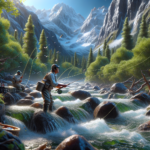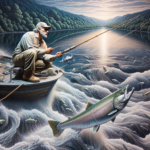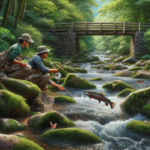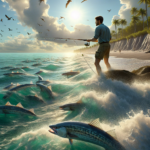Fly Fishing in Montana’s Rivers and Streams
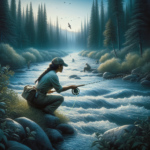
Introduction
Imagine standing knee-deep in a crystal-clear river, surrounded by the breathtaking landscapes of Montana, casting your line in hopes of catching a prized trout. Did you know that Montana is home to over 22,000 miles of fishable streams and rivers? This makes it a premier destination for fly fishing enthusiasts from around the world.
In this article, we will explore the rich history and cultural significance of fly fishing in Montana, delve into the best techniques and gear, and provide detailed information on the top fishing spots, species, and seasonal considerations. Whether you’re a seasoned angler or a beginner, this guide will help you make the most of your fly fishing adventure in Montana.
Fly fishing in Montana matters because it offers unparalleled opportunities to connect with nature, challenge your skills, and experience the thrill of catching some of the most sought-after fish species in North America. Let’s dive in and discover what makes Montana a fly fishing paradise.
Background/Context
Historical or Cultural Significance
Fly fishing has deep roots in Montana’s history and culture. The state’s rivers and streams have been fished for centuries, initially by Native American tribes and later by European settlers. The practice gained popularity in the early 20th century, thanks in part to the writings of authors like Norman Maclean, whose book “A River Runs Through It” immortalized the art of fly fishing in Montana.
Geographical Overview
Montana’s diverse landscape includes the Rocky Mountains, vast plains, and numerous rivers and streams. The state’s climate varies significantly, with cold winters and warm summers, creating ideal conditions for a variety of fish species. The local ecosystem is rich and diverse, supporting a wide range of aquatic life, making Montana a prime location for fly fishing.
Key Points/Details
Fishing Techniques
Technique Overview
Fly fishing in Montana primarily involves techniques such as dry fly fishing, nymph fishing, and streamer fishing. Each technique has its own unique approach and is suited to different conditions and fish species.
When and Where to Use
Dry fly fishing is most effective during the summer months when insects are abundant on the water’s surface. Nymph fishing is ideal for colder months or deeper waters where fish are less likely to rise to the surface. Streamer fishing works well in fast-moving waters and is particularly effective for targeting larger fish.
Recommended Gear
- Rods: A 9-foot, 5-weight rod is versatile and suitable for most conditions in Montana.
- Reels: A quality reel with a smooth drag system is essential for handling strong fish.
- Lines: Floating lines are ideal for dry fly fishing, while sinking lines are better for nymph and streamer fishing.
- Flies: Popular patterns include the Adams, Elk Hair Caddis, and Woolly Bugger.
Species Information
Species Overview
Montana’s rivers and streams are home to a variety of fish species, including rainbow trout, brown trout, cutthroat trout, and brook trout. Each species has its own habits and preferred habitats.
Best Practices
To successfully catch these species, it’s important to match your fly to the local insect hatch, use stealthy approaches, and present your fly naturally. Early morning and late evening are often the best times to fish, as fish are more active during these periods.
Location Information
Top Fishing Spots
- Madison River: Known for its large rainbow and brown trout, with easy access points and amenities.
- Yellowstone River: Offers diverse fishing opportunities and stunning scenery.
- Gallatin River: A great spot for beginners, with plenty of access points and a variety of fish species.
Regulations and Licenses
Montana requires all anglers to have a valid fishing license, which can be purchased online or at local retailers. Be sure to check local regulations for specific catch limits and seasonal restrictions.
Seasonal Considerations
Seasonal Variations
Fishing conditions in Montana change throughout the year. Spring and fall offer cooler temperatures and active fish, while summer provides excellent dry fly fishing opportunities. Winter can be challenging but rewarding for those willing to brave the cold.
Best Times to Fish
The optimal seasons for fly fishing in Montana are late spring through early fall. Early morning and late evening are the best times of day to fish, as fish are more likely to be feeding during these periods.
Events and Tournaments
Event Overview
Montana hosts several fly fishing events and tournaments throughout the year, including the annual Montana Fly Fishing Festival and various local competitions. These events offer opportunities to learn from experts, compete with fellow anglers, and enjoy the camaraderie of the fishing community.
Preparation Tips
To prepare for an event, make sure your gear is in top condition, practice your casting techniques, and familiarize yourself with the event rules and regulations. It’s also a good idea to scout the fishing location in advance.
Tips and Best Practices
General Tips
- Always match your fly to the local insect hatch for the best results.
- Use a stealthy approach to avoid spooking fish.
- Practice your casting techniques to improve accuracy and distance.
Avoid Common Mistakes
- Avoid using too heavy a line, as it can scare fish away.
- Don’t neglect to check local regulations and obtain the necessary licenses.
- Be patient and persistent; fly fishing requires practice and dedication.
Advanced Techniques
- Master the double haul cast to achieve greater distance and accuracy.
- Learn to read the water to identify the best fishing spots.
- Experiment with different fly patterns and sizes to find what works best.
Gear and Equipment Recommendations
Essential Gear
- 9-foot, 5-weight fly rod
- Quality reel with a smooth drag system
- Floating and sinking fly lines
- Assortment of flies (e.g., Adams, Elk Hair Caddis, Woolly Bugger)
- Waders and wading boots
Optional Gear/Upgrades
- Polarized sunglasses to reduce glare and see fish more clearly
- Fly fishing vest or pack for easy access to gear
- Landing net to safely handle and release fish
Where to Buy or Rent
Local fly shops in Montana, such as The River’s Edge in Bozeman and Grizzly Hackle Fly Shop in Missoula, offer a wide range of gear for purchase or rent. Online retailers like Orvis and Cabela’s also provide quality fly fishing equipment.
Safety and Conservation
Safety Tips
- Always check the weather forecast before heading out.
- Wear appropriate clothing and gear to protect against the elements.
- Be aware of wildlife and take precautions to avoid encounters.
Conservation Practices
- Practice catch and release to preserve fish populations.
- Respect local wildlife and their habitats.
- Follow all fishing regulations and guidelines.
Planning Your Trip
Accommodations
Montana offers a variety of accommodations near popular fishing spots, including lodges, cabins, and campgrounds. Some recommended options include the Madison Valley Ranch in Ennis and the Yellowstone Valley Lodge in Livingston.
Travel Tips
Montana is accessible by major highways and airports, with Bozeman Yellowstone International Airport being a convenient entry point. Renting a car is recommended for exploring the state’s fishing locations.
Additional Activities
In addition to fly fishing, Montana offers a range of outdoor activities such as hiking, wildlife viewing, and rafting. The state’s national parks, including Yellowstone and Glacier, provide stunning landscapes and opportunities for adventure.
Frequently Asked Questions (FAQs)
What is the best time of year to fly fish in Montana?
The best time to fly fish in Montana is from late spring through early fall, with optimal conditions in early morning and late evening.
Do I need a fishing license to fly fish in Montana?
Yes, a valid fishing license is required to fly fish in Montana. Licenses can be purchased online or at local retailers.
What are the most popular fly patterns in Montana?
Popular fly patterns in Montana include the Adams, Elk Hair Caddis, and Woolly Bugger.
Are there guided fly fishing trips available in Montana?
Yes, there are numerous guided fly fishing trips available in Montana, offering expert advice and access to prime fishing locations.
Conclusion
Fly fishing in Montana’s rivers and streams offers an unparalleled experience for anglers of all skill levels. With its rich history, diverse fish species, and stunning landscapes, Montana is truly a fly fishing paradise. By following the tips and recommendations in this guide, you’ll be well-prepared to make the most of your fly fishing adventure in the Treasure State. So grab your gear, head to Montana, and experience the thrill of fly fishing in one of the world’s premier destinations.

